CDC Infographic
# 9251
Despite ongoing attempts by FEMA and Ready.gov to try to get Americans prepared for disasters (see America’s Preparathon! : It Started Like Any Other Day), polling shows that half of American families remain ill prepared to deal with even a 3-day disruption in essential services like electrical power, water, or the ability to run to the grocery store.
Those that say they are prepared often overestimate their ability to fend for themselves during a prolonged crisis.
Which is why, seven years ago I began a tradition in this blog (see Hickory Farms Will Hate Me For This) where I suggested people abandon the stale idea of buying friends and family ugly neckties, holiday themed sweaters, or boxes of assorted meats and cheeses for the holiday season – and give them preparedness gifts instead.
This is something I’ve personally been doing for many years, so each year I try to highlight some of the gifts I’ve recently purchased for myself and others. Products mentioned here are to provide a general idea of the type of gift, and should not be viewed as an endorsement of one brand over another.
Now when I impulse buy gadgets, at least I can call it research.
Anyone who knows me knows that I have a particular interest in (ok, its more of a compulsion to buy) LED flashlights and lanterns. In 2006 I lucked upon a closeout bin of cheap imported `shake flashlights’ for .77 cents each, and bought out the store (40 of them, 38 of which I gave as gifts).

A couple of years later I ran across a deal on LED headlamps, and bought about 20 of them for $2 apiece. The following year, I found LED Cap lights (they clip to the bill of a baseball style cap) for $3 each, which I confess I like even better. And it seems each year the LED lanterns get lighter, and brighter.
And the best part, none of the items pictured below cost me more than $5 each.

Every home should have a battery operated radio, yet many do not. A few years ago I bought my daughter a combination windup-battery-solar AM/FM/SW radio for under $40, and she uses it every day.
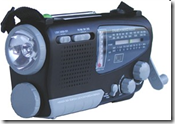
I also found a combination AM/FM Weather ALERT radio at a discount store for under $20. Again, every home and business should have an emergency alert radio.
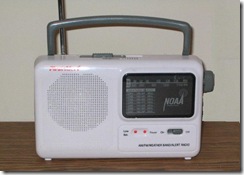
Last year I’ve upgraded my FRS radios from my old Motorola Walkabout T5000s to a pair of Motorola MJ270R 22-Channel Two-Way Radios. They not only have a built in NOAA Weather Radio, they each have an LED Flashlight as well (nirvana!).
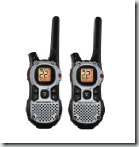
My old T5000s still work, so they will be handed out to neighbors in the event of a local crisis, to help with neighborhood communications.
A couple of years ago I bought several water filtration systems, one to keep and a couple to give to prepping buddies. LifeStraw ® is now available in the United States and Canada; at just 2 ounces, this personal water filter will reportedly filter 1000 liters down to .2 microns. Not bad for around $20.

Speaking of water, having a way to store enough water for three days (1 gal/person/day) is essential. A family of 4 will need at least 12 gallons for 72 hours. Personally, I keep enough for a couple of weeks. While there are plenty of `free options’ – like rinsed and recycled 2-liter plastic soda bottles or other food-safe plastic jugs – you can also buy collapsible 5 gallon containers.

I also picked up a few single burner Propane stove units on sale for $10 each. Add a couple of 1 pound propane cylinders (about $3 each) and you can cook for a week.

I also buy a few magnesium fire starters each year (at $4 each) which will end up as stocking stuffers.

For Christmas a several years back I put together some first aid kits, and distributed them to a number of friends and relatives. You can either put one together yourself, or purchase one already assembled. There is no substitute for having a well stocked first aid kit when you need one.

As I’ve described in Preparedness: Solar Power On A Budget, it is a relatively easy task to set up a simple solar charging system. No, you won’t keep the A/C or refrigerator running on a budget system, but you can keep your LED lantern batteries, cell phone, iPod or iPad, or notebook computer running.
I’m seeing reasonably priced `briefcase’ solar panels – often for between $50 and $80 – that, when unfolded, can charge a 12 volt storage battery with up to 13 watts of power. Add a $20 inverter (converts 12 volt battery power to 120v AC), and you can do a heck of a lot.
If I didn’t already have a couple of more powerful panels left over from my sailboat, I’d seriously consider one of these.
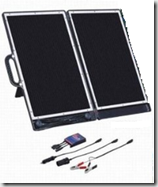
Typical 13 watt Solar System
Speaking of inverters, I have a 400 watt unit for my solar setup, but I’ve also just purchased an 80 watt cigarette lighter inverter for my car. It can power a small laptop, and has a USB charger port as well. Under $20. A few of these will end up in the stockings of friends this year. .
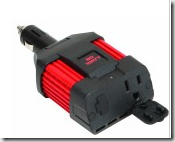
And for under $10, you can pick up a cigarette lighter USB charger, that can top off your phone or mobile device.
Something as simple, and as utilitarian, as a multifunction `Swiss’ army knife or a `Multi-tool’ makes a great preparedness gift.
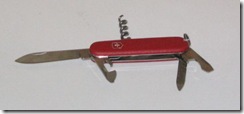

Another inexpensive gift idea that is handy every flu season, and could be even more valuable during an epidemic – is for under $10 you can buy a box of exam gloves, and a box of facemasks.

Several years ago Joel over at Preparedness and Response came up with what I consider to be an excellent preparedness idea, giving USB flash drives to family and friends and instructions on how to back up their important papers and documents.

Inexpensive USB Drives start under $10.
He explains it in his essay Helping others prepare (Personal Preparedness), where he gives his rationale for going with the durable mil-spec and encrypted, but fairly pricey IronKey brand.
My thanks to Joel for a terrific idea.
These are all useful, indeed, potentially lifesaving items, that most people simply don't think about buying fror themselves until it is too late.
Giving them as gifts, instead of more traditional items, not only helps prepare the people you love and care about for an emergency, it opens the door for conversations about pandemic and disaster preparedness.
We need to cultivate a culture of preparedness in this country, and around the world.
We can start doing that, one gift at a time.
And one last reminder for the upcoming Holiday Season.
This year, when we think about ways to give back to our community, remember that more people will be relying on community food banks than in years past.
In addition to anything else you might do, this is a good time to go through your pantry and donate foodstuffs that are approaching (but not exceeding) their `use by' date.
